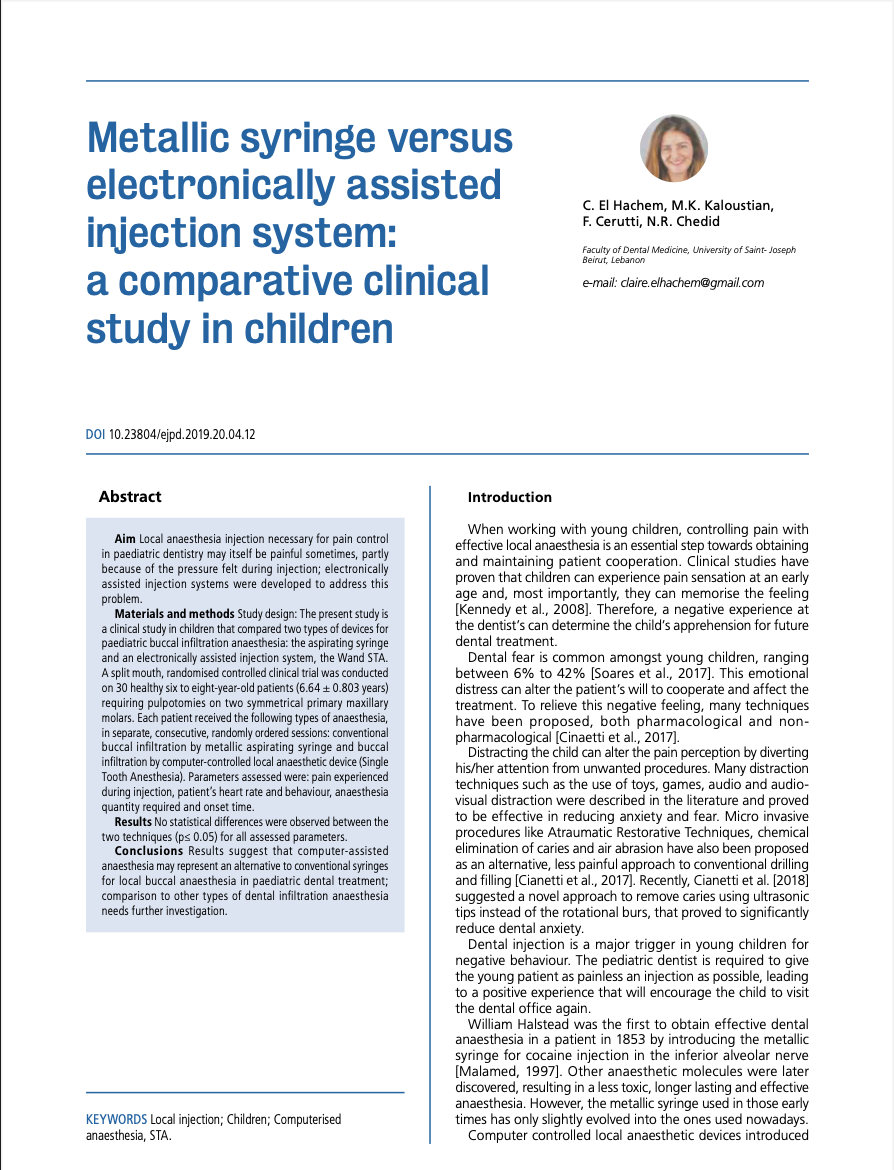El Hachem C, Kaloustian MK, Cerutti F, Chedid NR. Metallic syringe versus electronically assisted injection system: a comparative clinical study in children. Eur J Paediatr Dent. 2019;20(4):320-4.
AIM: Local anaesthesia injection necessary for pain control in paediatric dentistry may itself be painful sometimes, partly because of the pressure felt during injection; electronically assisted injection systems were developed to address this problem. MATERIALS AND METHODS: Study design: The present study is a clinical study in children that compared two types of devices for paediatric buccal infiltration anaesthesia: the aspirating syringe and an electronically assisted injection system, the Wand STA. A split mouth, randomised controlled clinical trial was conducted on 30 healthy six to eight-year-old patients (6.64 +/- 0.803 years) requiring pulpotomies on two symmetrical primary maxillary molars. Each patient received the following types of anaesthesia, in separate, consecutive, randomly ordered sessions: conventional buccal infiltration by metallic aspirating syringe and buccal infiltration by computer-controlled local anaesthetic device (Single Tooth Anesthesia). Parameters assessed were: pain experienced during injection, patient’s heart rate and behaviour, anaesthesia quantity required and onset time. RESULTS: No statistical differences were observed between the two techniques (p? 0.05) for all assessed parameters. CONCLUSIONS: Results suggest that computer-assisted anaesthesia may represent an alternative to conventional syringes for local buccal anaesthesia in paediatric dental treatment; comparison to other types of dental infiltration anaesthesia needs further investigation.


Scrivi un commento